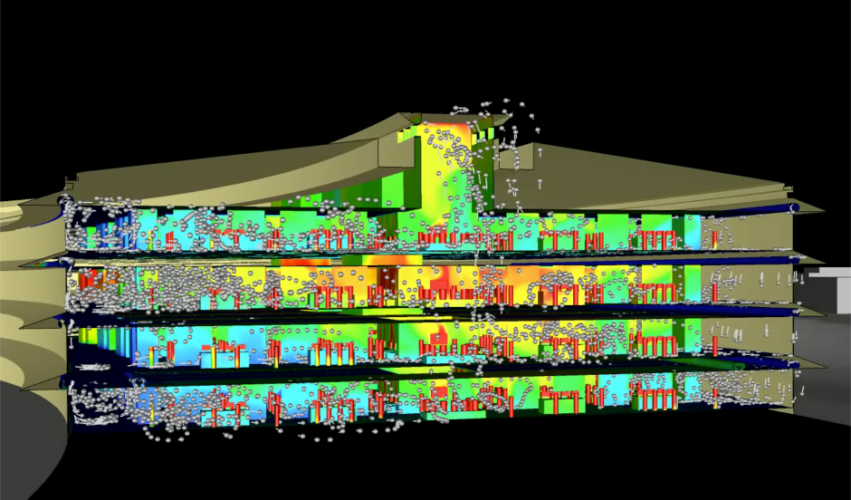Now that the World Health Organisation has acknowledged that Coronavirus can be spread by particles in the air, it is clear that managing airflow, especially indoors, will be key to everything we do in future.
CLICK FOR MORE COVID-19 COVERAGE FROM THE ENGINEER
From designing offices and shops to travelling in airplanes and queueing in supermarkets, airflow will change so many ways that we interact with the world.
Airborne transmission is a particular threat in closed, densely populated, or poorly ventilated spaces, where airflow can play a crucial role in how tiny micron droplets that humans expel during talking, coughing, or sneezing are circulated and potentially infecting people.

The most frequent droplet size that we expel during normal speech and coughing is around seven microns in diameter, which is very close to the size of pollen particles and can contain strands of Coronavirus. This is unlike the larger droplets which are caused by sneezing, which in the hundreds of microns range, and when those droplets become expelled their trajectory is dominated by gravity and end up on the ground pretty quickly.
The pollen-sized particles are much more likely to influenced by airflow as opposed to gravity because of the way they move through the air, meaning those particles are probably the most dangerous ones that we need to consider.
A recent study in a restaurant in Guangzhou, China looked at the effects of airflow, which showed that the virus only seemed to infect people on one side of the restaurant because that was where the air from the air conditioner was being blown. Those closer to the person spreading the disease didn’t catch it, showing airflow appearing to be a particularly important factor.
There's some more data from the unfortunate outbreak that occurred on the Diamond Princess cruise ship, which also shows quite how sensitive confined spaces can be. They found that the calculated rate of reproduction (or R-rate) on the ship was 14.8, a significant uptake on the standard scientific R-rate of this virus which is in the 2.7 to 3 range. If you're getting a R-rate where one person could contaminate 15 others, then there's evidence to say that the airborne side of Coronavirus should be taken very seriously.
We are facing an enemy which is continually mutating
While we have started to adapt to a new way of living through social distancing, we need to also think of how we can adapt our environment to negate the spread of Coronavirus.
One of the methods we are examining at Wirth Research is the use of vertical airflow, which would push airborne particles to the ground out of harm’s way. Creating vertical airflow is really not difficult at all, but I don’t think anybody has realised how important it is in context of this huge pandemic we face.
We found in our research for looking at a solution for a passenger lift that you can have very small social distances, with very low chances of transmission, if you have a vertical airflow speed of around one metre per second (or two miles an hour).
Our simulations have shown that this can allow spectacular reductions in the distance of people with no chance of them being contaminated, while putting any contaminants on the floor which are frequently cleaned.
The main reason I am so passionate about this is that there is a massive amount of evidence out there to say that Coronavirus and other viral viruses, will be our single biggest threat to society going forward. You just have to look at the number of Coronaviruses that biologists and epidemiologists are telling us are circulating in the animal kingdom. We are facing an enemy which is continually mutating, has thousands of forms, is airborne, and is capable of making the jump from species.
I think this is the time for humanity to say we better take this Coronavirus threat very seriously, and we should be already preparing ourselves for the next one. I'm hopeful that with modern technology we'll be successful in finding a vaccine for Covid-19, but I don't think we can count on it, so we also need to focus on mitigation.
And if we find a way to deal with Coronavirus we can use that to deal with other viruses. In the history of humanity there is still no cure for the common cold, but perhaps we can find a way to stop us catching it in the first place.
Nick Wirth is President of Wirth Research and expert in airflow analysis










UK Enters ‘Golden Age of Nuclear’
The delay (nearly 8 years) in getting approval for the Rolls-Royce SMR is most worrying. Signifies a torpid and expensive system that is quite onerous...